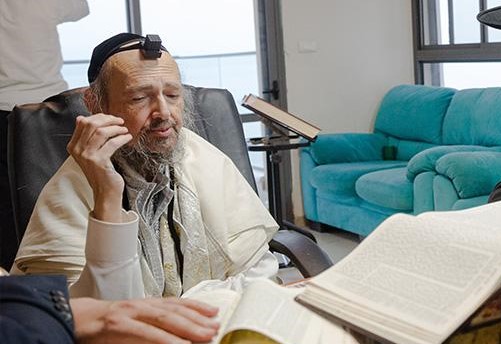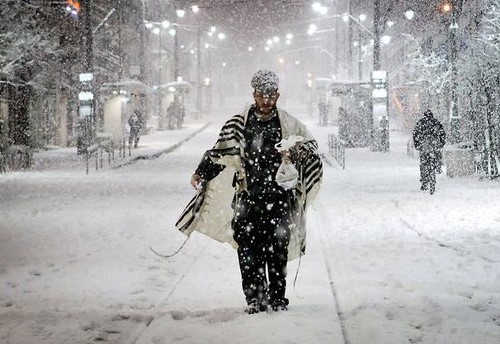Adapted from the writings of Dayan Yitzhak Grossman July 4, 2024

Green Gold: Are Dollar Bills Money?
Adapted from the writings of Dayan Yitzhak Grossman
June 11, 2024
AP News reports:
James Kane has used a powerful magnet to fish all manner of junk from New York City waterways, but he says the stacks of $100 bills he pulled from a safe were something else entirely…they estimate that the safe contained as much as $100,000, though the bills were partly decomposed and stuck together…
The New York Police Department’s public information office said in a statement that “the value and authenticity of the alleged currency” could not be determined due to its “severely disintegrated condition”…
Kane, 40, said he and Agostini, 39, plan to take their soggy money to the Bureau of Engraving and Printing in Washington to redeem it, though he acknowledged some portion of the bills will likely be too damaged to recover.[1]
This is the BEP’s “Mutilated Currency Redemption” policy:
Lawful holders of mutilated currency may receive a redemption at full value when:
- Clearly more than 50% of a note identifiable as United States currency is present, along with sufficient remnants of any relevant security feature; or
- 50% or less of a note identifiable as United States currency is present, and the method of mutilation and supporting evidence demonstrate to the satisfaction of the BEP that the missing portions have been totally destroyed.
No redemption will be made when:
- A submission, or any portion thereof, demonstrates a pattern of intentional mutilation or an attempt to defraud the United States. In such instances, the entire submission will be destroyed or retained as evidence.
- A submission appears to be part of, or intended to further, any criminal scheme. In such instances, the entire submission will be destroyed or retained as evidence.
- A submission contains a material misrepresentation of facts.
- Fragments and remnants presented are not identifiable as United States currency.
- Fragments and remnants presented which represent 50% or less of a note are identifiable as United States currency, but the method of destruction and supporting evidence do not satisfy the Treasury that the missing portion has been totally destroyed.[2]
Several years ago[3] we wrote the following:
Two centuries ago, poskim debated the halachic status of a then-novel form of money: banknotes—negotiable promissory notes, made by a bank or other licensed authority, payable to the bearer on demand—the precursors of modern paper money. The primary question was whether they are considered money (ma’os or matbeia), have inherent value (gufo mamon), and are the equivalent of the metal coins which had been traditionally used as money. Alternatively, perhaps they are only considered documents (shtaros), i.e., financial instruments, which are not gufo mamon. Most poskim considered them ma’os and gufo mamon, albeit for a variety of different reasons:
R’ Meshulam Igra argues that the defining characteristic of shtaros is that even if they are destroyed, the value they represent is still accessible if the underlying facts can be established. This is not the case with banknotes, where the issuer is exempt from payment if the notes have been destroyed, even if witnesses testify to the destruction…[4]
In a footnote to that article, we asserted that as per the BEP policy cited above, R’ Meshulam Igra’s statement regarding banknotes that “the issuer is exempt from payment if the notes have been destroyed, even if witnesses testify to the destruction” is not the case with modern paper money, at least in the case of United States currency.
The truth is, however, that this was likely an error on our part. In accordance with the governing regulation, the BEP will only replace mutilated currency if it is at least partially still present, but not if it has been totally destroyed:
No relief will be granted on account of lawfully held paper currency which has been totally destroyed.[5]
R’ Meshulam Igra would therefore probably consider modern U.S. currency as well to be gufo mamon, since the BEP will not replace totally destroyed currency, apparently even if the fact of its destruction has been satisfactorily established.
Later in that article, we asserted that
While there is a minority view that banknotes are indeed considered shtaros,[6] the halachic consensus is that they are not.[7]
It should be noted that the minority position was held by several leading nineteenth-century authorities—including, apparently, R’ Meshulam Igra himself, as reported by R’ Shlomo Drimer (the Bais Shlomo), who endorses this view in the context of a courier’s liability for the loss of money entrusted to his care:
And if this money was in the form of banknotes…it is anyway impossible to hold the courier liable, because the gaon of Lisa (R’ Yaakov Lorberbaum, the Nesivos Hamishpat)…writes unequivocally that they are shtaros and one may not redeem a firstborn son with them.
And so I heard in my youth from elder talmidei chachamim that this is how the outstanding gaon Maharam (R’ Meshulam) zt”l, the av bais din of Pressburg, ruled when he was av bais din of Tysmenytsia, in a case similar to ours that came before him, and he exempted the agent/custodian from responsibility for banknotes that had been sent with him.
And although the Chasam Sofer utterly rejected this position and wrote that banknotes do not have the status of shtaros, I have elsewhere argued at length that his words are not at all compelling to reject the words of the aforementioned geonim, and we certainly cannot exact compensation from one who is in possession (muchzak)…
This ruling of R’ Meshulam Igra seems inconsistent with his view cited above (from his published teshuvos) that banknotes are indeed considered gufo mamon; perhaps he changed his mind between the two cases, or perhaps the rules governing banknotes (or his understanding of those rules) changed between them.
In any event, as we have noted, despite the fact that such eminent authorities as the Nesivos, R’ Meshulam Igra (in the case cited by Rav Drimer), Rav Drimer, and R’ Shlomo Kluger[8] consider banknotes to be shtaros rather than currency, the consensus of halachic authorities is that banknotes are indeed considered currency and not shtaros. Nevertheless, some Acharonim recommend against using them to redeem a firstborn son (which requires currency or assets that are gufo mamon rather than shtaros[9]),[10] a position entertained by the Chasam Sofer himself, despite his considering them to definitely be currency and not shtaros in other contexts.[11]
The Chazon Ish, however, maintains that banknotes may even be used to redeem a bechor,[12] and R’ Asher Weiss considers this to be the ikar lahalachah, particularly in our times:
For only prior to several decades ago…banknotes of states were supported by the silver, gold, and similar assets in state vaults, and there was a kind of obligation upon every state to pay anyone who came and asked to redeem his money. But in our times, there is no connection between the amount of a state’s banknotes and the silver and gold in its vaults, and what determines the amount of money that a state prints is only the influence of the quantity of money upon the economic systems, for an increase in the money supply causes the rising of prices (“inflation”). And if so, it appears logical that banknotes are not considered proof of some separate obligation at all, and they are not similar to shtaros and are absolutely gufo mamon.[13]
[1]Joseph B. Frederick and Karen Matthews. New York magnet fisher catches safe full of soggy $100 bills, he says. AP News. https://apnews.com/article/magnet-fisher-catches-cash-filled-safe-d5a1ddb6a5accbf65542dfbab444c0f6.
[2]The Bureau of Engraving & Printing–Mutilated Currency Redemption. https://www.bep.gov/services/mutilated-currency-redemption.
[3]Crypto-Judaism: Is Bitcoin Money? Bais HaVaad Halacha Journal. Aug. 19, 2021.
[4]Shu”t R’ Meshulam Igra C.M. siman 16, and cf. Shu”t Maharsham cheilek 2 siman 100.
[5]Code of Federal Regulations, 31 CFR 100.6.
[6]See Shu”t Bais Shlomo C.M. siman 34; Chochmas Shlomo beginning of siman 292 (and cf. end of siman 74) and Shu”t Ha’elef Lecha Shlomo C.M. siman 6. Cf. Shu”t Machanei Chaim cheilek 2 E.H. siman 26.
[7]Minchas Pitim C.M. end of siman 303; Shu”t Zkan Aharon cheilek 1 (C.M.) siman 98 end of s.v. Ulefi ha’amur; Aruch Hashulchan C.M. 68:9 (with regard to negotiable banknotes usable as currency).
[8]See n. 6.
[10]Shu”t Chessed Le’Avraham kama Y.D. siman 95; Aruch Hashulchan Y.D. 305:18.
[11]Shu”t Chasam Sofer Y.D. siman 134, but cf. ibid. C.M. end of siman 187 s.v. Venidon habanki and siman 153 s.v. Vegam bechalipin. Cf. Erech Shai C.M. beginning of siman 203; Shu”t Oneg Yom Tov Y.D. siman 102.
[12]Chazon Ish Y.D. end of siman 72, 8-10 (cited by R’ Asher Weiss, see next footnote).
[13]Shu”t Minchas Asher cheilek 1 siman 47 p. 155.





